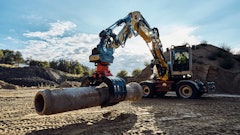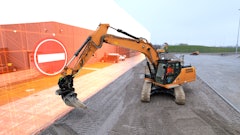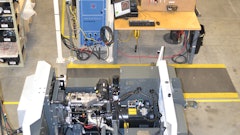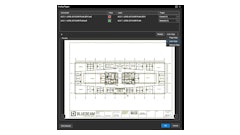
For construction workers, suppliers, and equipment providers, the headlines warning of new crises have multiplied, especially over the last couple of years. The COVID-19 pandemic, recurring materials scarcity, and now a 500K+ shortage of workers in the labor market in 2023 alone have made the road to recovery a multi-year effort for construction industry.
From raw materials producers to those putting the final touches on the front door before keys are handed over to new owners, players in the construction space are reliant on each other to keep their businesses moving forward. Efforts to digitalize operations had started before the onset of the Covid-19 pandemic, but due to its global impact, the pace of these efforts were dramatically sped up. Now, in it’s wake, the industry has an opportunity digitalizing other operations which may now be taking higher priority such as sourcing materials, increasing access to cost data, and sourcing opportunities to cut costs such as manufacturing rebates which may not be highly accessible. While this work has started, the technological advancement of contractors, suppliers, and other players is largely siloed. To move up to the next level of digital connectivity, each vertical needs to reassess where their existing technology may be improved by partnering with others.
1. Contractor Adoption of Technology is Changing the Jobsite
Workers and industry analysts agree that construction as a whole is behind the times when it comes to technology and is in significant need of an upgrade. The jobsite of tomorrow will not look like a scene out of I, Robot, but rather an augmented partnership between the trained specialists from roofing to flooring and technology which helps them to get the job done in an efficient and effective way.
While there has been trepidation in the past around technology and its potential to replace workers, the mindset across the industry has shifted especially in reaction to the multitude of challenges being faced in the post-pandemic world. Wearables that can detect fatigue and alertness, drones, and robots helping to assist in repetitive tasks are just a few of the upgrades currently being implemented to assist in workforce management and safety. Beyond these physical upgrades, contractors are starting to look towards software to help keep administrative work on track such as scheduling, resource allocation, and even traditional workflows such as takeoff and estimation building. The next step for those developing these tools is to understand how to connect them across the job site, similar to how knowledge workers of today approach building their tech stack for project management in sales and customer support.
2. Construction Management Platforms Ease Contractor Pains
It’s no longer a debate as to whether contractors in any field can afford to continue with a pen-and-paper approach to estimation. An entire marketplace of solutions has opened up to contractors for use in building takeoffs and live updating cost databases that have replaced the need for cost books. Unlike the annual release of cost books in the past, the new data systems are kept up-to-date by the minute, entirely eliminating the need for contractors to do guesswork around what materials they need, and if they’re even available at their closest supplier. Additionally, considering the amount of time it takes to build even a single-family home, the price fluctuation in today’s materials market means a home may cost a figure wildly different from the original bid.
For contractors using platforms that are connected directly to distributors and materials manufacturers, there’s no longer a need to even leave the platform to figure out where the rolling price of the project has landed. Thus, the estimation platform is also able to function as a project management tool. By leaning into these platforms, which offer easy-to-understand interfaces, even junior employees can start to learn the ropes, meaning more opportunities to upskill and create additional value in entry-level employees. Advancements in project management platforms are already alleviating pain between contractors, suppliers, and those who are actually going to benefit from the finished project, but even within the software space, silos exist. Becoming the single-source connection point between builders ranging from kitchen remodelers to those in charge of building skyscrapers of tomorrow means building connections to other parts of the pipeline.
3. Manufacturers and Suppliers Are Digitizing Supplies
As with any industry, the key audience for manufacturers and distributors of raw and prefabricated construction materials is the end user, which for many are contractors. While some larger firms may have purchasing departments that handle the acquisition and logistics, the average construction company employs less than 10 people. For distributors trying to connect with their target market, this means you must find them where they already are, and today that means online. Across the industry, it takes on average 100 different suppliers and subcontractors to complete a single project, which provides a rich opportunity for suppliers to connect with new contractors every day. As contractors digitalize their operations, so have suppliers, building online product catalogs that provide interactive inventories of material descriptions, prices, and availability. Access to information about a specific material, piece of equipment, or even prefabricated part doesn’t innately solve one of the logistics problems that especially plague contractors operating at a smaller scale, localization. Even if a contractor is able to find a part online from a supplier, having it readily available in their area of operation when a project is ready to go, and knowing what it will cost at their local distribution hub, is critical to developing an estimation that is legitimately accurate.
It’s understandable that complex catalogs containing thousands or even millions of unique product IDs can be difficult to digitize and keep updated, but in order to reach full utilization, these systems must be connected with external platforms that can make the search and purchase process easier for builders, and can even find hidden savings in the form of manufacturer rebates. While an upfront investment may be necessary, those suppliers who make this leap in accessibility first will quickly see returns in the form of increased customer interest, and ideally, purchases.
A Digital Future is Just Around the Corner
The industry standard has changed for the better, as the era of pen and paper is sunset. Digitalization is happening across all facets of the construction world, and in a few year's time, both construction sites and standards for purchasing and project management will look vastly different. Once a marketplace of tools both digital and physical have been developed, the next step will be to build APIs that allow these tools to connect across sectors, increasing their value add to customers who uitilize them. This is the same model that has seen high levels of growth in many Silicon Valley success stories. While new tech may be a challenger in the space, it can provide those who adopt an advantage in the bidding and building process, and it’s the only way to keep up given the external stressors the industry will continue to face into the near future. From here, the only question that should be asked by all those developing products and services for the industry is, what else can this connect with?


























